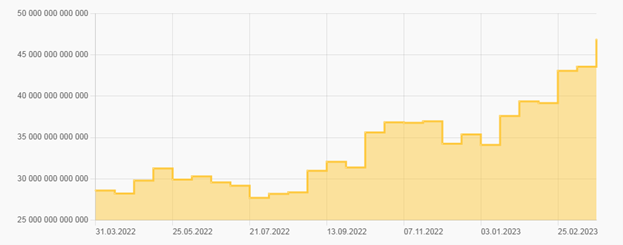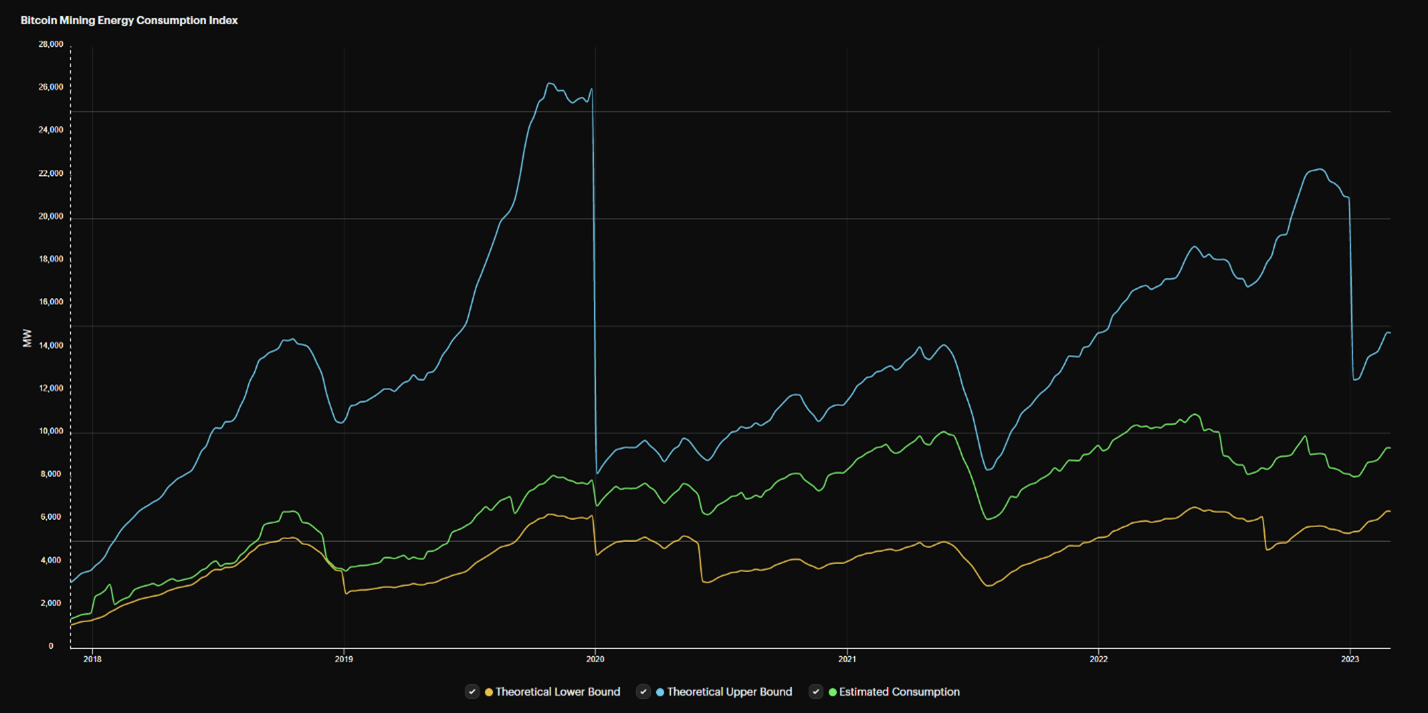Bitcoin mining
For the first time in its history, mining difficulty has exceeded 45 T (trillion) and is predicted to rise to 48.8 T as a result of the next change in difficulty. Thus, the recalculation in favor of an increase could occur for the fourth time in a row. For the most part, this indicator has been increasing since the beginning of 2023, and the last serious pullbacks were observed in December 2022, when the difficulty did not even reach 40T.

With the current level of complexity and the number of blocks before it is recalculated in real time, you can follow the Bits.media tools at the link.
Recall that the average time to search for a new block in the network is 10 minutes, and the difficulty is recalculated every 2016 blocks, or approximately once every two weeks. If the total computing power in the network grows and the block search speed increases, as a result of the recalculation, the complexity changes upwards. The downward adjustment, respectively, takes place against the background of a decrease in the total computing power and an increase in the time interval for searching for one block.
In total, the complexity of BTC mining is now at its historical maximum. At the same time, the block time remains almost constant – 10 minutes, which is achieved not least due to the efficiency of modern equipment. The last strong deviation was on March 23, when the figure fell to 7.87 minutes.
When analyzing the state of the network, it is worth considering such an indicator as the current Bitcoin mining hashrate. It is currently over 360 exahash/sec.

You can get acquainted with the current level of the current bitcoin hashrate and the dynamics of changes in real time at the link.
As we can see, the dynamics of the current hashrate correlates with changes in network complexity. This suggests that miners prefer to use more and more computing power specifically in the Bitcoin network, despite the long crypto winter, the depreciation in 2022 and severe financial consequences, including in the form of bankruptcies for individual players.
Challenges for miners
In this situation, some experts
including Cryptonomistsee certain difficulties and challenges for miners.
The main problem is that the more difficult it is to mine a cryptocurrency, the more energy it requires. The difficulty of mining lies in the large number of hash function calculations before the very value is found, with the help of which the block will be confirmed. Each confirmation has a reward, which is currently 6.25 BTC. Obviously, this work involves a huge amount of electricity.
On the other hand, the release of new, including more energy efficient ASIC solutions and the development of new technological processes for such devices leads to a decrease in the level of energy consumption of a single piece of equipment. This allows less energy to be spent processing the same number of hash functions. Consequently, there is a certain rebalancing of costs due to the complexity of mining. But in any case, the competition in mining and the chances of a successful block search (and hence potential income with an equal BTC rate) for an individual miner are reduced.
This statistic
confirm Cryptonomist experts, noting that over the past seven years, the hashrate has grown by about seven times, while the power consumption of the network has only doubled. This is supported by the relatively stable level of the BTC mining energy consumption index.

Source: hashrateindex.com
Hash rate
As we already mentioned, there is a dependence: the complexity grows due to the low block search time, and it, in turn, decreases due to the increase in the hashrate. In turn, miners compete to get as much hashrate as possible and maximize the chance of mining that single value. That is why they unite in pools, dividing their income in proportion to the results and the capacities invested in the network.
In addition, there is always the problem of the actual profit from mining, which depends on the market value of bitcoin. Because converting to the fiat equivalent of 6.25 BTC when Bitcoin is worth $69,000 is one thing, but “cashing out” when BTC is worth only $23,000 is another.
Difficulty is currently at an all-time high and the BTC market value is over 60% below its all-time high. Based on this, miners’ incomes are close to the lows of the end of last year (at the same time, local lows of the exchange rate were reached). From this data, it becomes clear why 2022 was the worst year for bitcoin mining.
The high hash rate and record difficulty may indicate an increase in the interest of miners in bitcoin as a long-term asset, since momentary profit taking into account all costs is debatable. Potentially, such interest leads to an increase in the cost of mining new coins, and the bet of individual players on the long-term prospects and the holding strategy can be considered as one of the possible signals for further growth in the rate.
This material and the information in it does not constitute individual or other investment advice. The opinion of the editors may not coincide with the opinions of the author, analytical portals and experts.
Source: Bits
I am an experienced journalist, writer, and editor with a passion for finance and business news. I have been working in the journalism field for over 6 years, covering a variety of topics from finance to technology. As an author at World Stock Market, I specialize in finance business-related topics.







